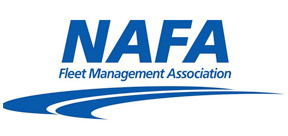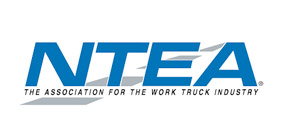Clean energy and recycled water move Boise toward a carbon neutral footprint

In order to create a higher quality of life for its residents, the city of Boise, Idaho, has committed itself to taking action to address climate change issues. The city made a bold goal in 2021 to be carbon neutral by 2050. This includes having 100% clean electricity for the city’s government facilities by 2030; being carbon neutral for the city’s government facilities and operations, as well as 100% clean electricity for the community by 2035; and finally having a carbon neutral Boise community by 2050.
This climate action plan has seven main priorities to help Boise reach this goal, including buildings and energy; transportation; consumption and waste; food systems; natural environment; water; and innovation and engagement.
Clean Energy
By participating in the Idaho Power Clean Energy Your Way program, Boise is moving toward its goal of having 100% clean energy by 2030. Idaho Power came up with this new offering for customers after adding a solar farm to its grid. Boise is the first city of its size to take on such a project, while partnering with another large customer, to enter into a contract with Idaho Power to buy the power output from a nearby solar farm. This move provides power to the Boise airport and Lander Street Water Renewal Facility.

“The relationship with Idaho Power stays the same,” Wil Gehl, Boise energy program manager, stated. “It’s just a different way of using and purchasing clean energy instead.”
The agreement’s effective date is Sept. 1. Boise is simply waiting on approval from the Idaho Public Utilities Commission. The transition to clean energy will be fairly simple for the city with no operational changes. During the day, the electricity will come from the solar farm, and at night, electricity will come from the normal power grid.
An obvious benefit is moving forward with the city’s goal toward clean energy. An added benefit is that the city will know better what it is paying for electricity each month while using the solar farm. By going through Idaho Power, the city also avoids having to pay any of the capital costs associated with constructing its own solar farm. With the airport and Lander Street Water Renewal Facility — two of the city’s biggest electricity users — using solar energy, Boise will achieve approximately 25% of its goal to be 100% clean energy.
The system can be easily replicated by any other large energy user in the city, making it easier for more customers to move toward clean energy.
“The project is straightforward,” Gehl emphasized. “And the goal is for other Idaho Power customers to take advantage of these clean energy possibilities.”
To any city interested in moving toward clean energy, he encouraged officials to look into it and start having conversations with their utility company on how to partner with them and start laying the groundwork for clean energy in the community.
Recycled Water
The city of Boise also started work on a water renewal utility plan in 2015, meeting with stakeholders and community members as a group for approximately five years in order to plan for the city’s future with wastewater. One of these decisions for the future was to start a recycled water program, which addresses issues relating to water in the climate action plan, as well as creates opportunities for the future and protection against drought.
Two wastewater facilities currently discharge into the Boise River. With this recycled water pilot program, the city takes some of that industrial water flow and pipes it over to a recycled water facility where it is run through advanced water treatment technology. From there, it can be recycled for groundwater recharge or industrial reuse. This new advanced water treatment includes a moving bed bioreactor, ultra-filtration, reverse osmosis and a form of granular media filtration. Using an ultraviolet-advanced oxidation process is also being considered.
For the last year, the facility has been testing a variety of options for advanced treatment while sampling and collecting data from the recycled water. This allows the city to see how well each of the technologies works. In the first year, the city has processed 3.5 million gallons of recycled water.
According to Royce Davis, recycled water program manager, this allows the city to get hands-on experience with this new technology. Testing out a variety of different methods also helps to prove the quality of the treatment of the water. With this different technology, the city started with 700 different parameters to look through to see what each method will and will not remove. The amount of sampling and data from the program will provide a good source when working with water resources and environmental quality in discussing the future of the project.
After the pilot program and facility were planned out, the city applied for and received a $1 million grant from the U.S. Bureau of Reclamation. This grant allows certain states in the West to use the funds for such water programs. While funds cannot be used toward anything construction-related, they can go toward site surveys and feasibility studies. Using this grant will also allow the city to apply for a USBR Title XVI grant of up to $30 million for the full-scale facility. Utilization of this grant helps with current and future planning efforts while opening up more planning opportunities in the future.
Once the city moves to full-scale operation, the goal is to increase the groundwater quantity and enhance the groundwater quality. In phase one of the full-scale recycled water facility, which will be housed in the industrial area of the city, the design will be to handle 6 million gallons of water per day. Industrial water will be re-piped to this new facility, which will help to create more capacity in the other two wastewater facilities.
A recycled water facility allows Boise to keep its water local and reuse it again within the community.
“This will help with drought and allow climate change,” Davis mentioned. “We’re planning for the next 50 years and planning for the future. This helps to create a drought-proof water supply.”
Creating more capacity at the other wastewater facilities also allows the city a greater capacity to grow both with industry and the community as a whole. Separation of industrial water from the other wastewater facilities also helps to conserve drinking water since drinking water will not be used for industrial water needs. This pilot facility will assist the city with the permitting process to get the required permits, such as an underwater injection control permit and a water recycling permit when the program is upscaled to a full facility.
Davis highly recommends recycled water as cities grow and treatment technology and the cost for normal treatment changes.
“The technology available to treat water is tried and proven,” he stressed. “It’s a great opportunity for any city to recycle and reuse their water and save their resources. Water recycling can be used in a variety of ways, and there are a lot of different reasons to do it. It’s great for any city to do.” During the pilot program, Boise is also maintaining a strong level of community engagement and transparency in this new process. It is a complex operation, so the city wants to ensure the community understands and supports the recycled water program. In order to see an up-close view of how it works, the city offers tours to the community in the pilot facility. So far, over 500 people have toured the facility.
Next Article: With 20 years of experience, RapidView brings unmatched service and support to the sewer industry




